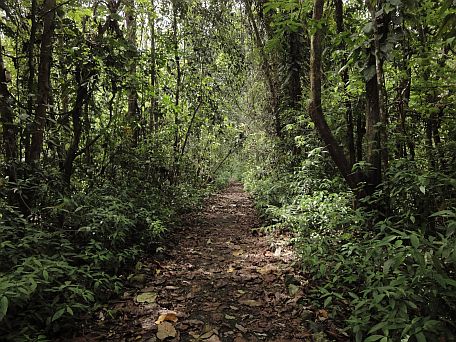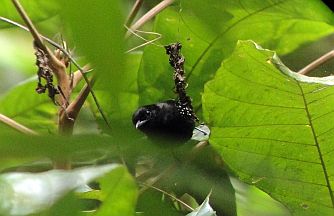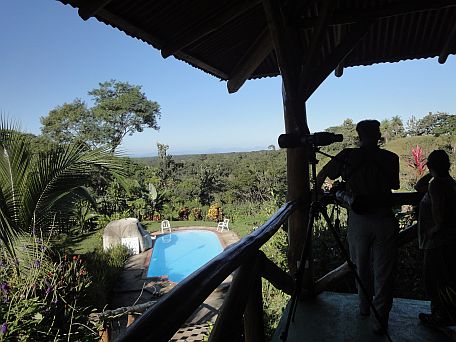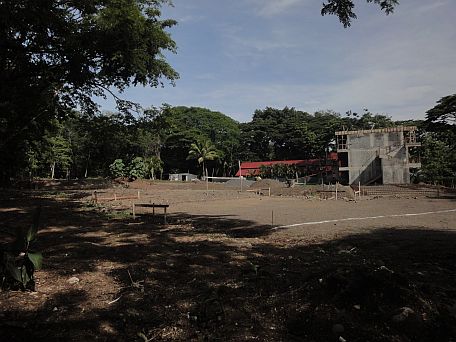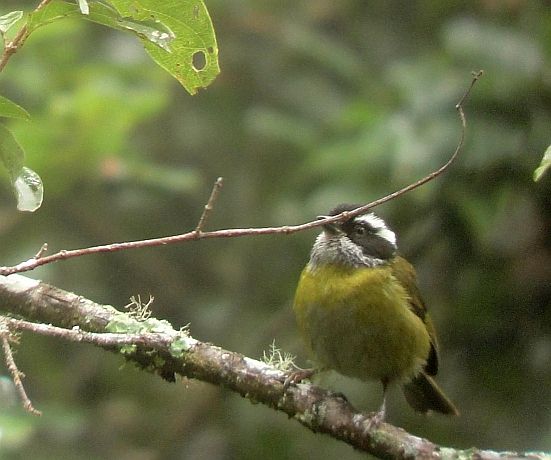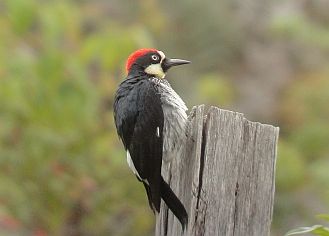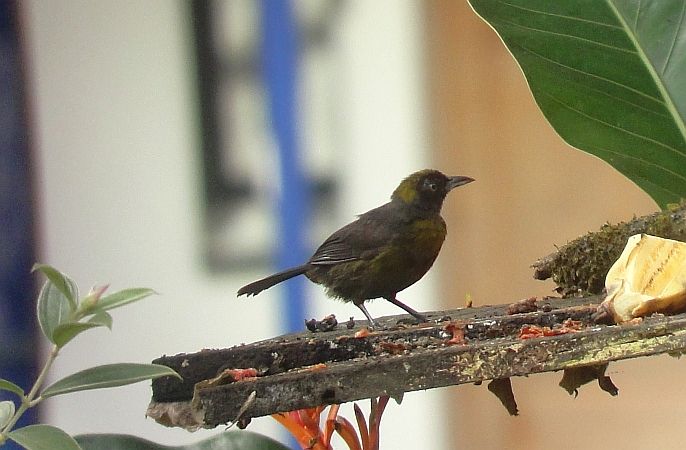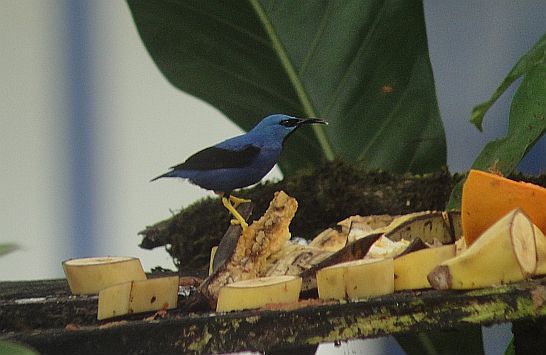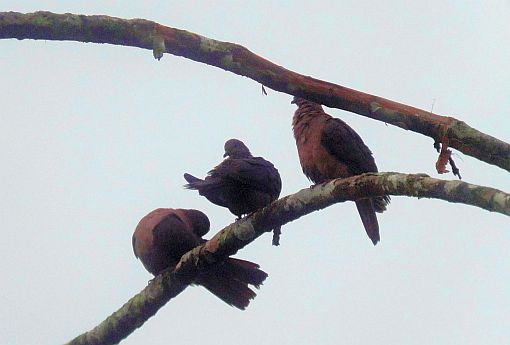In the highly important block of habitat known as Carara National Park, the birding is always productive even though there are few trails that actually access the forests of the park. Even so, they are enough to provide access to just about every species that occurs there and can even turn up some amazing surprises. For example, one resident guide told me that he was pretty sure that he saw an Oilbird once and another very reputable person is certain that he saw a Rufous-vented Ground-Cuckoo. As bizarre as that sounds, he was 99% sure about the cuckoo, so was the person he was guiding, and although I won’t say who the guide was, believe me when I say that you can trust his observations. The only scenario we could think of was that this shy, low density species may have an undetected population that normally keeps to the higher parts of the park.
Unfortunately, since the national park service doesn’t show any indication of putting in trails that would access those areas, they will keep their avian secrets and birders will have to “settle” for the River Trail and the forest trails near the HQ. Although they barely scratch the surface of the park, they do provide access to most of the bird species that occur at Carara and are exciting no matter how many times you bird them. Recently, a reader of my blog was inquiring about target species along the trails at Carara. Is the River Trail better for certain species than the HQ trails? Is it passable during the wet season? Or maybe you were wondering how these trails differ? Read on for some answers:
General Differences and Similarities between the two sets of trails:
Habitat:
- The River Trail passes through a mosaic of semi-open, viny, riparian forest. It also accesses thick, second growth, and towards the end of the trail, an oxbow lake and closed, primary rainforest.
A scene along the River Trail.
- The HQ trails access some second growth but mostly pass through beautiful, old-growth rainforest with immense trees. A couple of forest streams are also found along this trail.
The forest along the Universal Access segment of the HQ Trails at Carara.
Climate: Pretty similar for both trails but it feels hotter on the River Trail due to its more open nature.
Difficulty: Both are mostly flat and easy for walking. The HQ trails also have a cement, “Universal Trail” that can be accessed by wheelchair.
Accessibility: Both are easily accessed along the coastal highway between Orotina and Jaco. The trailhead for the HQ trails is at the main entrance to the national park. The River Trail is 2-3 kilometers from the main entrance along the highway, heading back towards Orotina and San Jose. Drive slow, ignore the horns of impatient drivers, and watch for a strip of yellowish paper tied to a tree on the right (east) side of the road that marks the entrance to the trail. If that sounds easy to miss, you are right, it is! It’s kind of ridiculous but watch for that strip of paper and a steep turn-off that goes down to a small parking area. The River Trail does flood on an annual basis and is closed when this occurs. This of course depends on the rains but usually happens from September to December. Check at the HQ to see if it’s open.
Restrooms and drinking water: Best to bring your own water for both but the HQ trails do have restrooms at the HQ and on the Universal Trail. Such facilities are lacking at the River Trail. The water is potable from faucets at the HQ but who knows if it will always be like that.
Safety: Both trails are safe but vehicles should always be parked where someone can see them. For the HQ trails, this is in front of the office where tickets are purchased. For the River Trail, this is at the trail head but only park the car there if someone is present to watch it as vehicles left alone have been broken into on many occasions. That said, it goes without saying that you should never leave anything of value in the vehicle.
And now for the birds.. Keep in mind that many of these can also be seen elsewhere and some are easier to see in mangroves, etc.
Species that are only found on the River Trail:
- Boat-billed Heron: A few are usually found roosting in trees at the edge of the oxbow lake.
Boat-billed Heron or NAG- the “neotropical avian gargoyle”.
- Other waterbirds: Widespread species such as Northern Jacana, Anhinga, Black-necked Stilt, and various herons and egrets are often seen at the oxbow lake.
The oxbow lake at the River Trail- always some good stuff here.
- Plumbeous Kite: Sometimes seen soaring high above the River Trail but easier at Cerro Lodge and in mangroves.
- Crane Hawk: Occasionally encountered on this trail, but easier at Cerro Lodge and in mangroves.
- Ringed and Amazon Kingfishers: Yep, at the oxbow lake.
- Olivaceous Piculet: Rare but if you are lucky, this is where you will probably see one at Carara. Keep an eye out for it in mixed flocks and learn its high-pitched, quiet, trilling song.
- Black-bellied Wren: Listen and look for this babblerish skulker in the heliconia thickets.
- Cherrie’s Tanager: Rare at Carara but sometimes seen along this trail.
Species that are only found on the HQ Trails:
- Blue-crowned Manakin: I suppose one could also turn up on the River Trail but I have never seen it there.
Both trails actually harbor many of the same species but it’s worth it to allocate quality birding time to each because some species are easier along one compared to the other. If you don’t see something mentioned (Rufous-tailed Jacamar for example), it’s because I have encountered it along both sets of trails with the same degree of frequency.
Species that are easier to see on the River Trail:
- Collared Forest Falcon: More regular along this trail.
A rather bad picture of this large raptor from the River Trail.
- Swifts: The more open nature of this trail facilitates watching (and being subsequently confounded by) swifts.
- American Pygmy-Kingfisher: Much easier near at the oxbow lake.
The American Pygmy-Kingfisher is one gem of a bird.
- Barred Antshrike
- Royal Flycatcher: If you can’t do the River Trail, look for it near the stream on the HQ Trail and along the Universal Trail.
- Orange-collared Manakin: Although I have seen it almost as often along the HQ Trail, especially along the beginning of the trail and the Universal Trail.
- Yellow-billed Cotinga: Rare but easier to see at fruiting trees along the River Trail.
- Turquoise Cotinga: Ditto.
- Rufous-breasted Wren: It’s common along the HQ Trails too but easier to see along the River Trail.
Species that are easier to see on the HQ Trails:
- Great Tinamou
- Muscoy Duck: Oddly enough, yes, along the creek!
- Blue-crowned Motmot: Although still easier in hotel gardens of the Central Valley.
- Long-tailed Woodcreeper: I see it much more often in mixed flocks along the forest trails than the River Trail although I have also encountered it there.
- Black-striped Woodcreeper
- Black-faced Antthrush
- Streak-chested Antpitta
Carara National Park is one of the more reliable places to see Streak-chested Antpitta.
- Golden-crowned Spadebill
- Ruddy-tailed Flycatcher
- Sulphur-rumped Flycatcher
- Eye-ringed Flatbill
- Red-capped Manakin
- Thrushlike Schiffornis
- Rufous Piha
- Scaly-breasted Wren
- Tropical Parula: More common and much easier to see at middle elevation sites.
- Spot-crowned Euphonia
The S-P Euphonia is a nice little near-endemic.
If you can’t bird the River Trail, don’t fret too much about missing Royal Flycatcher or Orange-collared Manakin because you still have a pretty good chance for them along the Universal Trail, especially if you hire a guide who is familiar with birding the park. For the Black-bellied Wren, though, I am afraid that you will have to bird some Heliconia thickets a bit further south.
O-C Manakin males are fancy little birds!


